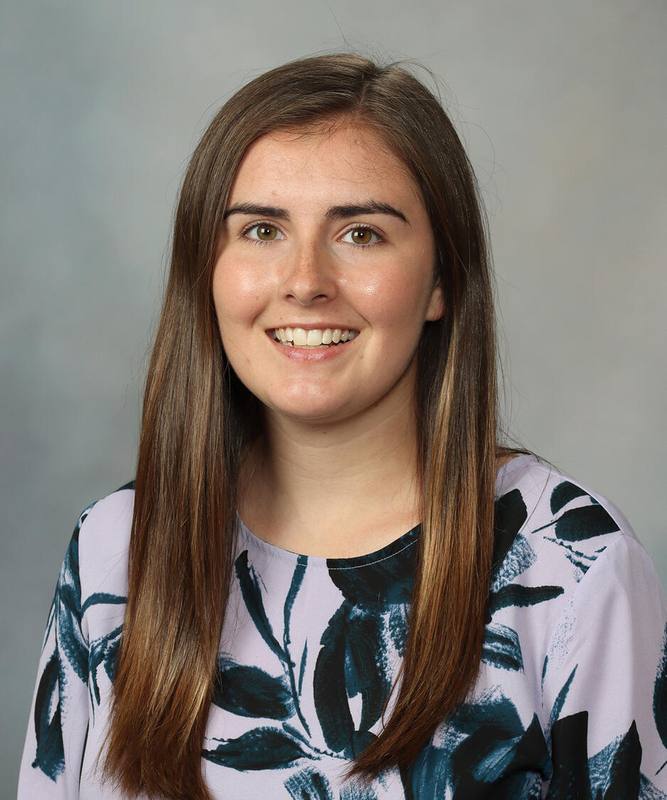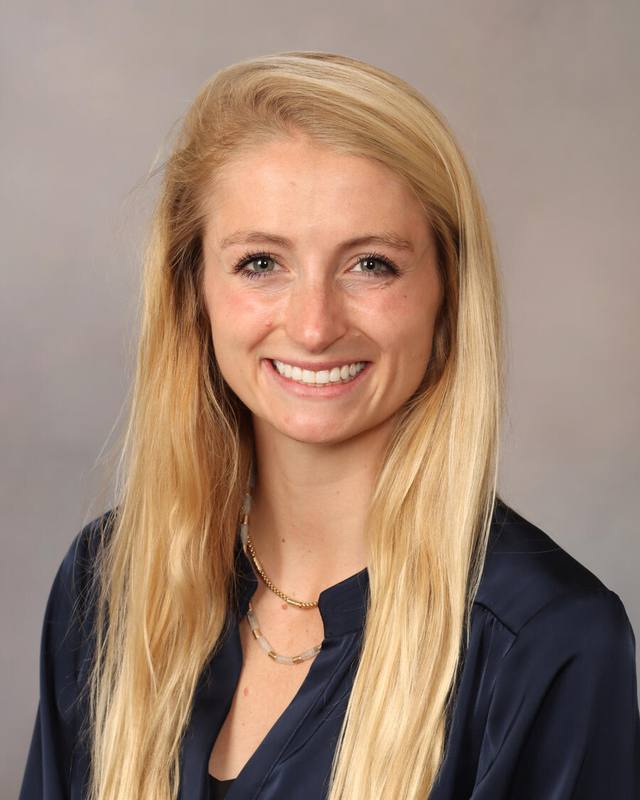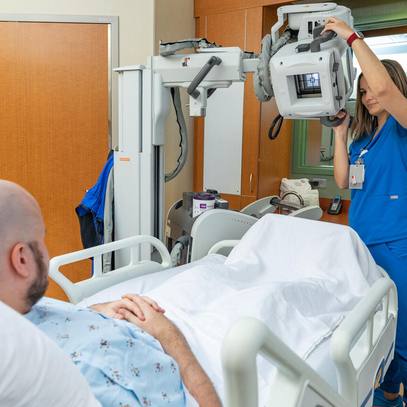For graduate students aiming to become scientists, Mayo Clinic's biomedical research training environment fosters a certain kind of thinking: How can new knowledge eventually improve the treatment of disease? "As students, we see the integration of research and patient care and what you can learn from both sides of the picture," says Ph.D. candidate Carli Stewart.

For Stewart, the desire to become a scientist began at home. From a young age, she was aware of her father's diagnosis with cancer and the struggles he faced as his body became resistant to some treatments. Four years ago, when she became a predoctoral student at Mayo Clinic Graduate School of Biomedical Sciences, she chose a research project addressing blood cancers like his.
Working under the mentorship of Mayo Clinic hematologist oncologist Saad Kenderian, M.B., Ch.B., she has studied specially engineered immune cells, called chimeric antigen receptor-T cells or CAR-T cells, that are used to treat blood cancers like leukemia. She identified a signaling protein that, when neutralized, boosts the function of CAR-T cells by keeping them from reaching a state of "exhaustion." She and Dr. Kenderian's team published their findings in Nature Communications.
Stewart was delighted to learn that the journey of the new concept didn't stop there. "The approach she explored is novel, and her findings show there's a solid rationale to see whether it may help patients," says Dr. Kenderian.
'An incredible learning curve'
As the opportunity to advance the idea has emerged, Stewart has begun to learn about developing a clinical trial. "It's been an incredible learning curve," she says of taking a discovery beyond the lab space.
Close collaboration between researchers and clinicians at Mayo is what makes the steps of translation — from discovery to the clinic — happen efficiently, says Dr. Kenderian. Students like Stewart have opportunities to learn about the steps that shape clinical trials to bring new treatments to patients.
She and Dr. Kenderian met with a panel of Mayo physicians to get feedback about the design of a phase 1 clinical trial, which tests the safety of a new approach in a small cohort of patients who are interested in participating. "It was a great opportunity for me to hear how things are translated into the clinic, what questions and concerns clinicians may have, and how feasible our approach may be," she says.
"CAR-T cell therapy can be remarkable for some patients who have no other options, and the hope is to develop a more durable, lasting approach. This part of the research is still in early stages, but it's a very exciting project, and I feel lucky to be a part of it."
'Beyond what seemed possible'
Many Ph.D. students at Mayo Clinic are preparing for future careers in academia and industry. Another way they can learn about research that involves human participants is through an internship at Mayo Clinic's Office of Clinical Trials. Working with Mayo's clinical trials coordinators, students have followed a clinical trial underway and learned about designing a study that provides meaningful data and protects the rights, safety and welfare of patients who volunteer to participate.

But for some students, like Olivia Sirpilla, who is graduating in May from Mayo Clinic Graduate School of Biomedical Sciences, a long series of successful experiments in Dr. Kenderian's lab has opened the door to the next stages. Sirpilla's Ph.D. research looked at developing specially engineered stem cells from fat tissue as a treatment to calm the inflammation that occurs in immune diseases.
The team's results, published in Nature Biomedical Engineering, have set the stage for two potential clinical trials. One may be applicable to graft-versus-host-disease, an immune system complication that can occur after a stem cell transplant. The findings also may be applicable to the treatment of inflammatory bowel disease, particularly for patients who no longer respond to medications.
To design these clinical trials, Sirpilla and Dr. Kenderian are working with teams of Mayo clinicians who specialize in these disorders and their standard treatments. "I chose to come to Mayo Clinic for my Ph.D. to conduct lab research that would be highly translational," she says. "But to spend my thesis work developing a new cell therapy platform that is ready to be translated into a clinical trial is beyond what I thought possible in a Ph.D."
Research that reaches patients' daily lives
Stephanie Zawada began her Ph.D. with an interest in computational approaches to research, but she has always strived to make advances that reach patients' daily lives.

Her thesis project aimed to help physicians assess people who have experienced a stroke and may be at risk for another. She engaged two Ph.D. mentors who shared their expertise: Bart Demaerschalk, M.D., and Bradley Erickson, M.D., Ph.D. Dr. Demaerschalk is a professor of neurology who treats patients with stroke at Mayo Clinic in Arizona and has a longstanding interest in digital health and using telemedicine to reach remote patients, and Dr. Erickson is a professor of radiology who leads artificial intelligence studies at his lab at Mayo Clinic in Minnesota.
Zawada "took a very innovative approach, exploring digital tools that may help a healthcare team continue to monitor and evaluate patients who have been discharged from the hospital but remain at risk for stroke recurrence," says Dr. Demaerschalk.
First, Zawada scoured available databases to identify attributes, including mood changes and sleep patterns, that can signal an oncoming stroke and can be captured by smartphone-based technology known as "wearables." Then she worked with her mentors and members of the Center for Digital Health to develop a pilot clinical trial with patients who volunteered to participate in a study from their homes.
Zawada designed a study that met the requirements of an institutional review board, or IRB, to address regulatory compliance. Aiming to get information from a "real-world" setting — where patients interact with app-based tools and the tools account for the range of daily activities — added logistical and mathematical complexity to the project. She worked with Dr. Demaerschalk and Mayo Clinic hospital-based stroke teams to recruit a cohort of 35 patients who gave consent to be part of the clinical trial.
"Interacting with patients and hearing their concerns is the best way to advance useful technologies," Zawada says of designing the trial. "You want the clinical trial process to be as simple as possible for participants, and the only way to learn what tools and designs can make their lives better is to listen to them."
Her results showed that several behavioral and mood changes related to cerebrovascular disease can be captured with the use of wearable devices, even from patients going about their daily routines far from a hospital. The approach will need further investigation as a strategy to improve care and in the development of clinical trial measures, but the training to conduct a clinical trial is something that Zawada will take to the next stages of her career.
"Setting up a clinical trial is a complex process and really involves a team," says Zawada, who graduates in May and plans to continue researching wearables for patients who have other severe health conditions. "My thesis project was a multi-site collaborative effort — putting together the clinical questions, the new technology and the data analysis, the connection with patients — it's why I came to train at Mayo in the first place. As a student, I couldn't have done this project anywhere else."







